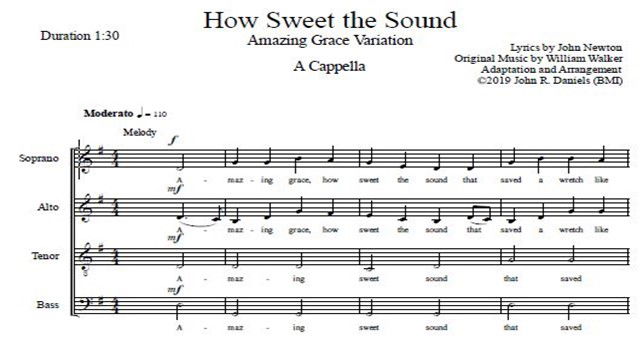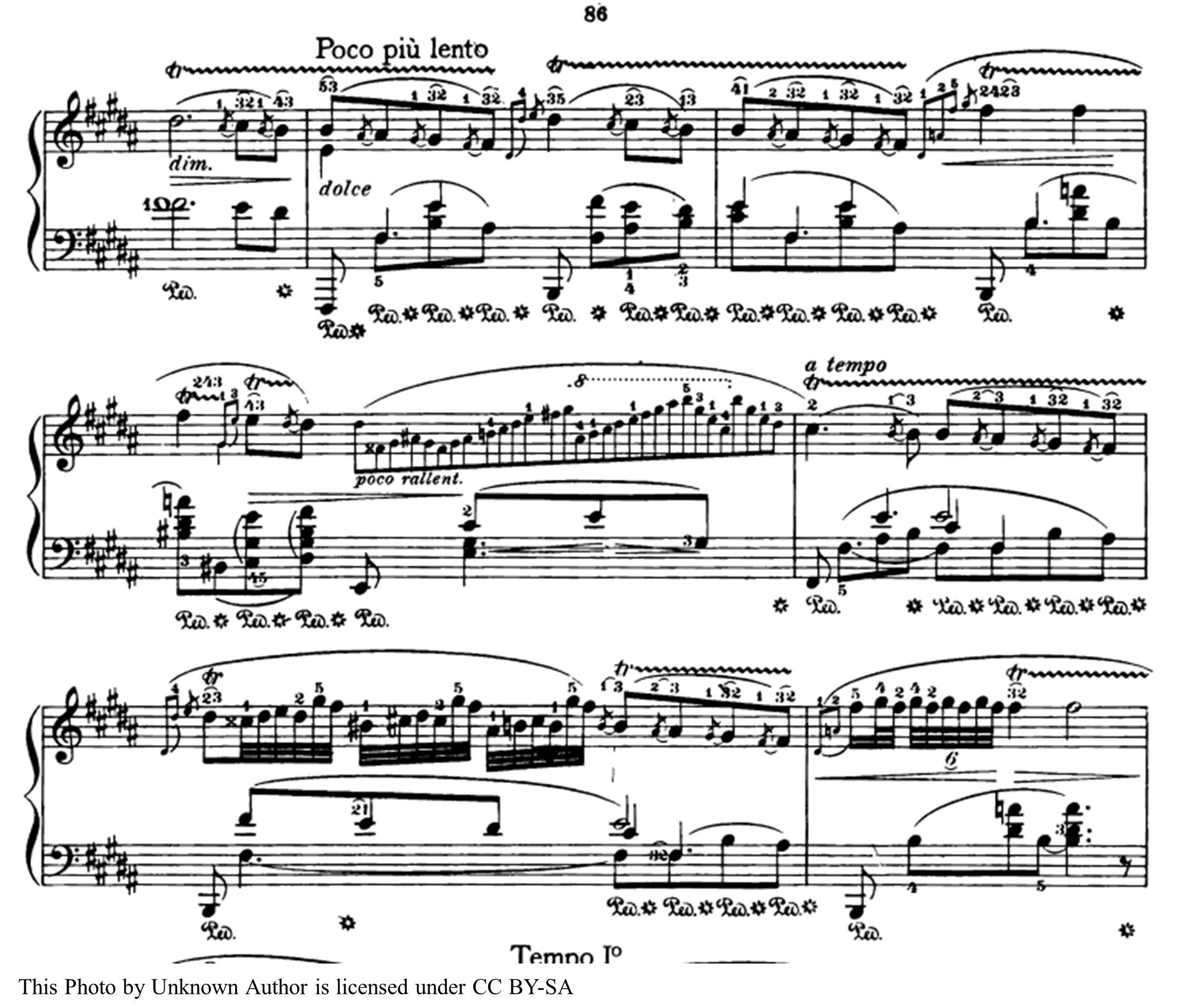How to Tell If an Arrangement is Worth Buying – A Comprehensive Guide for Music Directors

A music arrangement can describe either an arrangement of a piece that has existed for a while, or it can be the arrangement of a new composition. Often, new compositions can be arranged for different ensembles – various wind or string combinations or even vocal groups. So, in this article, arrangements will include original compositions.
Selecting the right musical arrangements is a critical aspect of a music director's role, whether leading a Concert Band, Choral Group, or String Orchestra. Choosing good arrangements involves a careful evaluation to ensure that they meet the standards of musical excellence, appropriateness for the ensemble, and alignment with the director's artistic vision. Here is a comprehensive guide on how a music director can determine if an arrangement is worth purchasing, regardless of the specific musical genre. It’s not necessarily a sequential list; some things overlap.
- Assessing the Arranger's Reputation and Background
The first step in evaluating a potential music arrangement is to research the background and reputation of the arranger. Consider their education, experience, expertise, and the genres they typically work with. Look for reviews or recommendations from other directors or musicians who have experience with the arranger's work. A reputable arranger often signifies a well-crafted arrangement.
It helps if the arranger plays or is familiar with most, if not all, of the instruments in the instrumental ensemble for which he is writing. Sometimes, the director may have to examine some of the arranger’s work to see if he has written in keys appropriate for the ensemble. Knowing that wind ensembles prefer flats and string groups prefer sharps, and not too many of either, allows an arranger to choose the right key for an instrumental piece. If the arranger also demonstrates a knowledge of the range of each instrument or voice, and the fingering of instruments, you will know that he has written parts that are not too difficult to perform. Find out a bit more about the man behind Salt Cellar HERE.
- Understanding the Ensemble's Skill Level
Before purchasing an arrangement, it's crucial to assess the skill level of the ensemble. Ensure that the arrangement is well-suited to the proficiency of your musicians. An arrangement that is too challenging may result in a frustrating experience for performers, while one that is too simple might not fully showcase the ensemble's capabilities. Finding the right balance not only enhances the overall performance but also fosters a positive and rewarding experience for your musicians. Ways to determine the ensemble’s overall skill level include:
- Individual assessments. The fairest way to do this is to have each member of the ensemble sing / play the same piece or section of a piece. You may want to do this only a couple times a semester. Some directors do it as part of a student’s grade.
- Section/part assessments. While each section/part plays, the director wanders among the players, listening, critiquing and making notes.
- Assessment as a whole. Sometimes, an ensemble has a few good players or singers, but the majority of its members aren’t as experienced as a director may wish. In that case, the lower skill level should be used in determining what music to purchase. I keep referring to the Pygmalion Effect, and this can be used with the less experienced group, just a little more judiciously. (The Pygmalion Effect is an experience where higher expectations lead to an increase in performance. Sometimes a music director uses a piece that is slightly more difficult than what is currently being performed to boost skill levels and improve confidence.)

- Examining Musical Content and Complexity
Carefully examine the musical content and complexity of the arrangement. Assess the quality of the notation, clarity of instructions, and the overall complexity of the piece. Well-constructed arrangements contribute to a smoother learning process and a more polished performance. Look for musical elements that challenge and engage the ensemble without overwhelming them.
Some things to consider:
- How long is it? A very competent group can play or sing a five to ten minute piece. The music itself should be interesting enough for that length of time. Multiple repeats or themes/motifs with little or no variations would be a giveaway. A less experienced group can play or sing for two to five minutes, and if the music is varied enough, that would work well.
- Younger groups often sing or play with simple harmony. Many younger bands or string orchestras have no parts in each section. That is, all the trumpets play the same part or all the violins play the same part.
- Look for consistency in notation. For choral groups, are eighth notes individual or beamed? Despite a director’s preference, the eighth notes should be written the same way throughout the piece. Especially for instrumental groups, do the notes properly split a measure? For instance, a syncopated measure in 4/4 time should be notated so that beat #3 is indicated by an eighth note or quarter note tied to its adjacent note. It should never be notated as eighth, quarter, quarter, quarter, eighth. Even though technically correct, it’s difficult for even more competent musicians to follow the beat.
- Look for easy to read spacing. If notes, especially any with durations shorter than a quarter note, are bunched together, it makes it hard to read. They should also be spaced as evenly as possible throughout the piece. Staves and systems should look “inviting” to read.
- Considering Instrumentation and Ensemble Size
Evaluate whether the arrangement is suitable for your ensemble's instrumentation and size. Some arrangements are tailored for specific instrumentations or different size groups, and it's crucial to choose one that complements your ensemble's specific characteristics. This ensures that each instrument or voice contributes effectively to the overall sound.
Salt Cellar can add instruments to an instrumental piece for free most of the time. We can also adapt most pieces for a nominal fee. Contact Us for details.
- Reviewing Licensing and Copyright Compliance
Ensure that the arrangement complies with licensing and copyright regulations. It is essential to obtain the necessary permissions to perform and, if applicable, record or reproduce the arrangement. This not only ensures legal compliance but also supports the creative work of composers and arrangers.
Salt Cellar Creations has done a number of arrangements of copyrighted works. These have been submitted to a company called ArrangeMe that takes care of ALL of the licensing and other technical financial obligations. When you buy through Salt Cellar’s store, you are doing so legally and morally.
Salt Cellar owns the copyright to all of its original compositions as well as arrangements of music that are now in the public domain. If you are a director of a school ensemble, whether public, private or homeschool, any licensing fees are waived.
- Listening to Recordings or Sample Performances
Whenever possible, listen to recordings or sample performances of the arrangement. This provides valuable insights into how the piece sounds in practice. Consider the nuances of the performance, interpretation, and overall impact. If recordings are not available, reach out to other directors or ensembles that may have experience with the arrangement.
Salt Cellar Creations has recordings of all of its compositions and arrangements.
7. Budgetary Considerations
Evaluate the cost of the arrangement in relation to your budget. While quality arrangements often come at a price, it's essential to strike a balance between artistic value and financial constraints. Explore options for obtaining review copies or perusal scores to make an informed decision.
Salt Cellar is able to create new compositions and arrangements for almost any ensemble. See the note at the end for more information.
There are a couple of old sayings that will speak well enough for themselves. One says, “Good ain’t cheap, and cheap ain’t good”. The other is, “You get what you pay for”.
8. Seeking Input from Ensemble Members
Involve ensemble members in the decision-making process. If involving the whole group is impractical, invite the section leaders / first and second chair holders to listen. Seeking their input on potential arrangements, and considering their preferences and playing styles fosters a sense of ownership and commitment among performers.
9. Keeping an Open Mind and Staying Informed
Finally, keep an open mind and stay informed about new and diverse musical arrangements. The world of music is dynamic, and new compositions and arrangements are continually emerging. Attend conferences, workshops, and festivals to discover fresh perspectives and broaden your repertoire. Refer to the other articles about new music for Concert Bands, Choral Groups and String Orchestras.
Conclusion The process of determining whether a musical arrangement is worth purchasing involves a multi-faceted approach. Music directors should consider the arranger's reputation, the ensemble's skill level, musical content, instrumentation, licensing compliance, sample performances, artistic vision, budget, and input from ensemble members. By carefully evaluating these factors, music directors can curate a repertoire that not only meets the technical demands of the ensemble but also aligns with their artistic vision and the preferences of the performers. This thoughtful approach contributes to the overall success and fulfillment of both the director and the ensemble.
Salt Cellar Creations understands the challenge of finding new music for your ensemble. We have a growing library of original works and arrangements. Choose from Concert Band, Choral or String Orchestra.
SCC can also compose an original piece for you or do a custom arrangement for you. There are two ways that this can be done; one is much more affordable than the other. And SCC is always looking for ideas of pieces to arrange or suggestions for original pieces.
We have sold music not only in the US but in Canada, the United Kingdom, France, Australia, and New Zealand. Please visit the WEBSITE or CONTACT US to let us know what we can do for you!